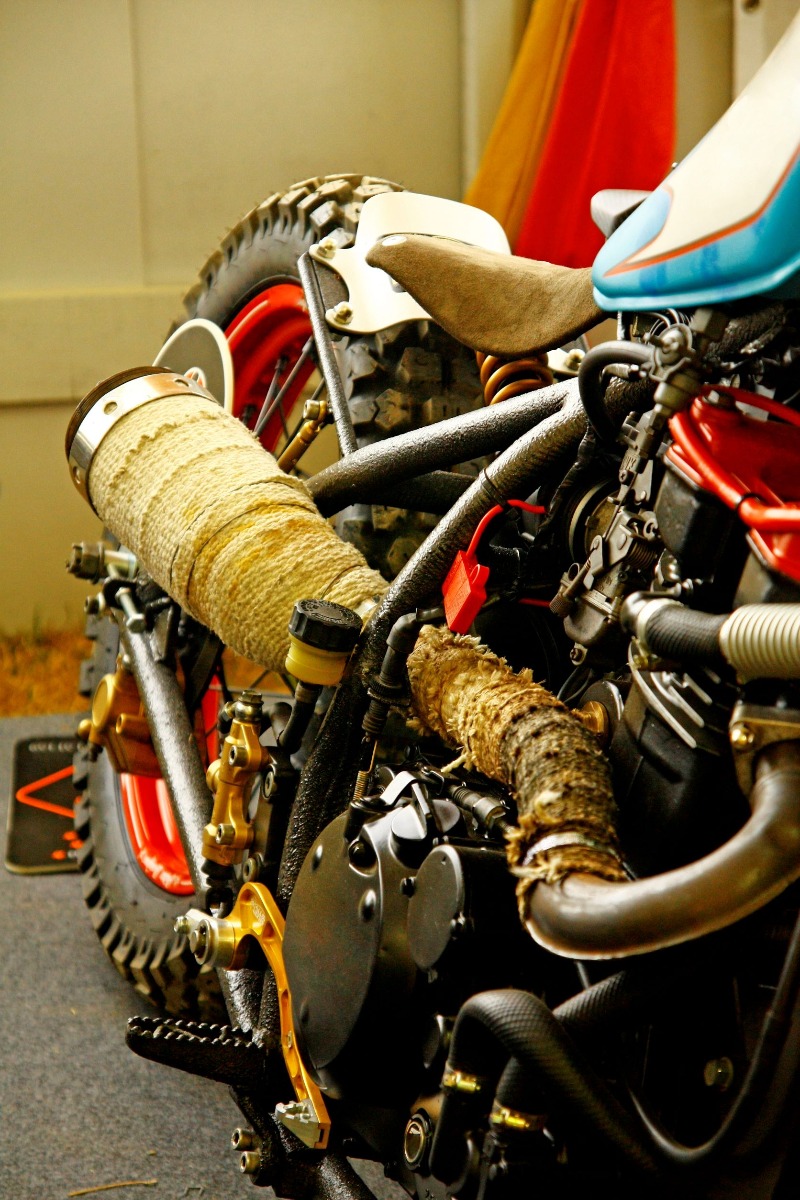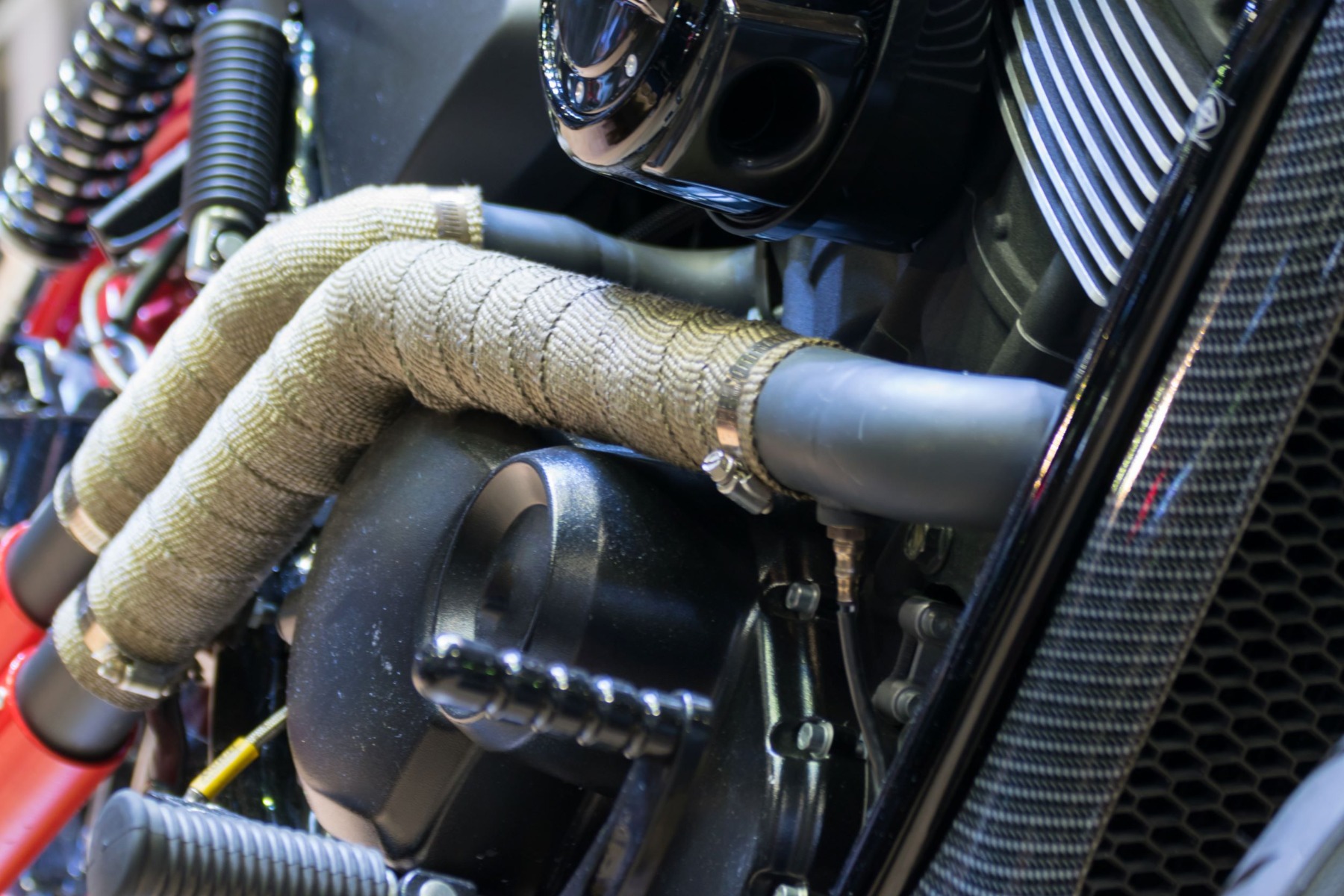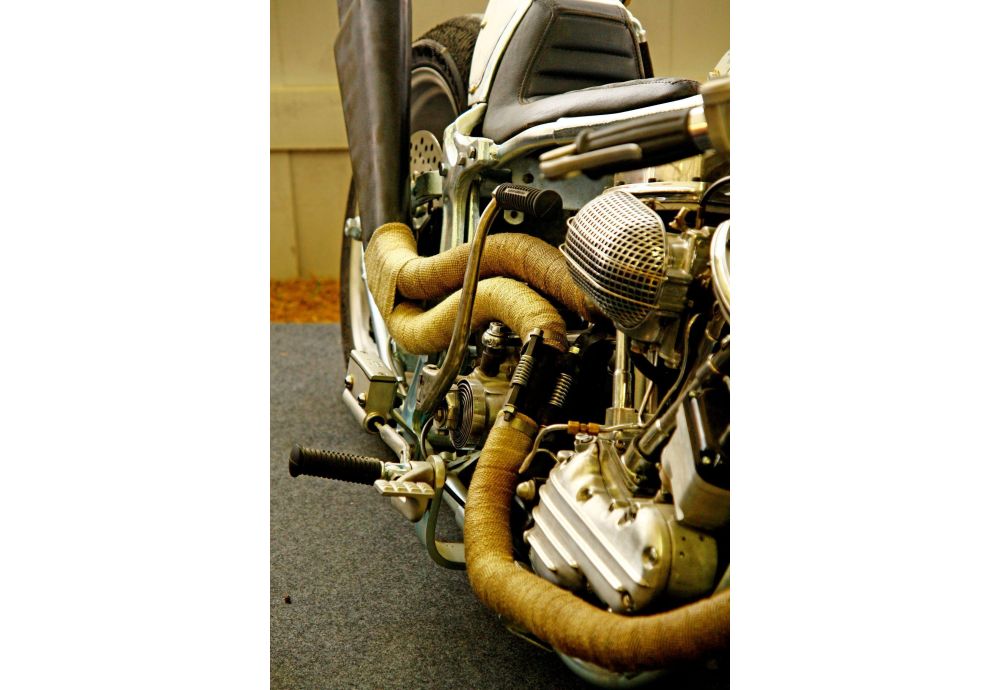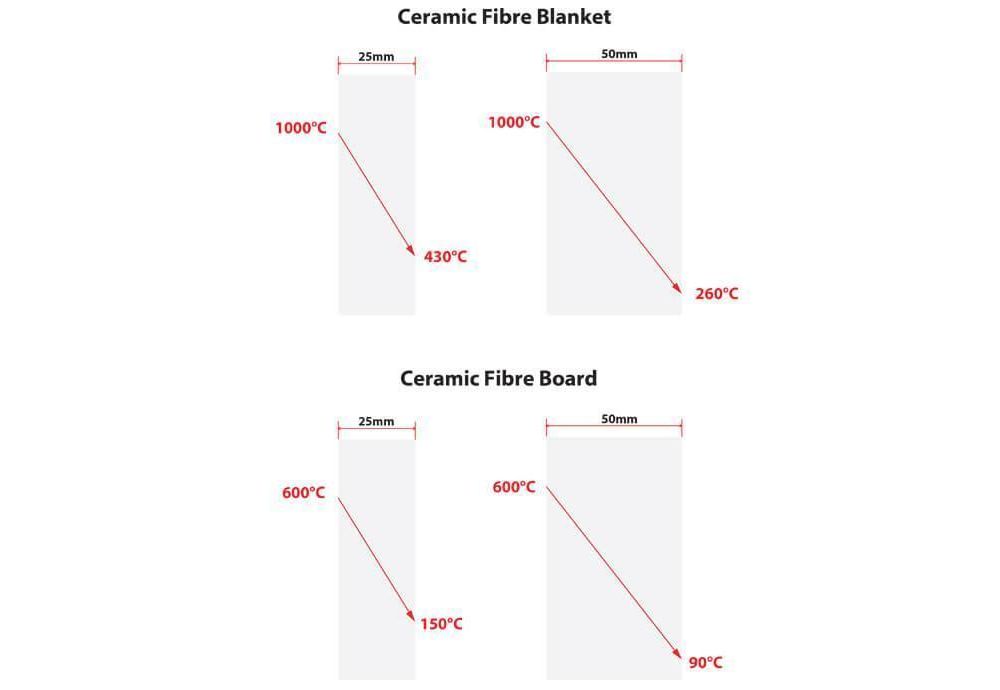Exhaust pipes, along with other components, in heavy and high-temperature machinery, serve the purpose of releasing built up heat, steam and other hazardous fumes from the machinery or vehicle. However, this process ends up heating them up and damaging them in the long run. Exhaust sections, pipes, and segments in any car or heavy-duty machinery are subject to constant heating and cooling that with long exposure can lead to severe and irreparable degradation and deterioration.
What Are the Perks of Insulating an Exhaust System?
Exhaust systems can easily be viewed as the backbone of any high-functioning piece of machinery or internal combustion engine. These components are integral in the smooth functioning of any automotive and heavy-duty machinery. However, the majority of people do not take out time to insulate or protect these components. The lack of proper protection and insulation can effectively destroy and reduce the lifespan of these components, and you will be left with an expensive repair.
You can read more about insulation itself in the article: What is insulation and how it works
Such complex components may be among the top channels of heat in the engines. It makes sense to not only protect them from a sudden surge of heat and rapid temperature changes but also insulate them, so they retain heat like they are supposed to.
Some people still believe that wrapping up the exhaust pipes, outlets, and compartments will be harmful to the overall engine system. Wrapping them up will result in unwarranted heat buildup, and this extreme heat will end up corroding or severely damaging the surrounding metal walls of the engine or exhaust pipes. However, that is inaccurate.
As long as the system is well insulated, there is no risk that the device will be vulnerable to failure because the whole system will sit at a constant temperature while it is in use. The insulation of these components makes sure that the entire engine is running at a constant temperature and no one component is out of step.
What you need to understand is that the heat does not reside in the walls of the exhaust systems, but it lies inside the exhaust gas itself. The exhaust gas is constantly being pumped through the entire engine, and then let out via the exhaust component. The metal walls change their temperature because of the movement of the gas inside them.
Insulating these walls will mean that the sudden surge of exhaust gas will not result in overheating of these components and they will be able to continue functioning for a longer period of time without breaking down.
Moreover, when the exhaust pipes and sections are well-ventilated and well-insulated, this results in the overall smooth functioning of the entire machinery or automobile. Since the gases are being let out in an orderly fashion, and the system doesn't overheat, the adjoining components perform excellently as well.
Another thing you need to understand here is the underlying physics. Well, we all know that molecules tend to move faster in a hotter environment. So, when the metallic walls of exhaust systems are insulated in an excellent fashion, it will retain heat inside the system, and the gases will actually flow faster. This will also result in faster acceleration and movement than cooler gases.
So, wrapping up the exhaust pipes not only results in perfect retention of heat but also makes the entire process faster, smoother, and more efficient than at cooler temperatures. Moreover, all of this is achieved without damaging the remaining components of the system.
Exhaust pipe insulation - Benefits
Here are some other benefits of insulating your exhaust pipes.
- Well-insulated systems also help with lowering harmful emissions. The automotive and industrial branches of the world have been trying to insulate the exhaust systems to lower the number of harmful emission outputs during the regular procedures.
- Once you have insulated the exhaust section, the rest of the engine will be cooler. Why? Because the insulation will reduce the heat transferring over to the engine bay, and keep everything running cooler, smoother and more efficiently.
- A cooler engine offers a better atmosphere for all the parts involved. Therefore, this cooler atmosphere increases its overall lifespan. Starter motors operate longer, ignition systems work more effectively with fewer risks of misfires, and the brake fluid is colder and hence less risk of breakage.
- If the car or the heavy machinery gets overheated for way too long, the components will eventually corrode, weaken, and break down. Insulating the heat will ensure that the car structure and the overall physical structure of the machinery stays intact for a longer period of time.
- The efficiency of the combustion cycle is better and higher than in an uninsulated system. Better combustion creates and gives more power to the engine.
- Once it exits the engine tubes, the exhaust gas produces an immense amount of heat, which can not only damage the turbine but the other components of the engine as well. In addition, for this heat to work properly, both the catalytic converter and the exhaust system come together as one to manage the flow. Headers and manifolds are pipe-like in nature, which implies very thin walls. This leaves them vulnerable to both higher temperature emissions and destruction. Heat insulation will help protect these thin walls, increase heat tolerance, and make sure that the gases are flowing around properly without causing an issue of overheating.
So, keeping your exhaust systems wrapped up in good insulating agents will keep them running more efficiently for a longer period of time. It will keep them cooler wherever it is required, and it will slow down the process of overheating so that the entire engine bay keeps operating at optimal levels without being exposed to unnecessary wear and tear.

How Can You Insulate the Car Exhaust in an Effective Manner?
Heat insulators help to contain the heat of everything over which they are wrapped. One of the most effective methods of repairing a hot firewall, interior, or a car fuel cell is to avoid heat with car heat insulation at the root.
Car heat insulation methods keep your car running smoothly for a very long time. Your car will not randomly overheat due to the gases, and the exhaust pipes will not crackdown for years to come. Insulating the care engine is one of the best ways to ensure that everything inside the engine bay is well-protected for a smoother ride.
There is a wide range of car insulators available in the market today. From wrapping the exhaust with a range of webbing tapes to engine wraps, from heat wraps to generic cooling agents, you can choose from a wide variety of wrapping options depending upon your requirements. Let’s take a look.
Exhaust pipe insulation - Product overview
Fiberglass Webbing Tape
Why is fiberglass insulation good? Well, this material can withstand an immense heat of up to 550oC in direct contact with the source of heat. Fiberglass coatings are quite famous and most commonly used in the automotive industry and industrial plants for managing the problems, such as overheating, rapid temperature changes, and other heat-related problems.
If you want to get more out of these coatings, you can mix fibreglass webbing tape with Vermiculite, and this will allow the fiberglass coating to withstand an immense heat temperature of up to 800oC or even 1000oC momentarily.
Basalt Webbing Tape
Basalt or volcanic rock wrapping insulation material is also quite popular among the industries. It can easily take on a temperature of up to 650oC. It doesn't crystallize under high temperature and maintains a flexible and abrasion-resistant form until the very end. However, this wrapping solution also falls apart at temperatures higher than 800oC. At anything above 800oC, basalt webbing tape will start to grow hard, brittle, and will eventually fall apart.
Silica Fibre Webbing Tapes
This can be viewed as a distant relative of the fiberglass insulation, but it actually offers powerful heat insulation up to 1100oC with ease. Silica Fibre Webbing Tape doesn't get brittle or fall apart under high temperature, but it does melt off at anything higher than 1370oC.
Ceramic Fibre Blanket and Glass Fibre Felt Insulation
Ceramic components can absorb a high amount of heat without losing their core properties. It makes sense to insulate the exhaust systems using the ceramic coating. Ceramic coating is naturally heat resistant, and can withstand high temperatures without breaking a sweat, literally! This improves the durability of your machinery and car and makes sure that the heat doesn't move around to other parts. It makes sense to use an insulation blanket material with an aluminium foil coating on the outside to further reduce the heat loss and also to maintain the integrity of the insulation wrap.
All mentioned exhaust pipe insulation products you can find in our shop.

Why Should You Insulate Your Engine and Exhaust Systems?
Engines generate much heat, and this heat can easily disturb the smooth functioning of any car or machinery. Standard running temperatures range between 80 and 110oC for a car engine, but the output of car exhausts run well above that. Of such engines, exhaust gas temperatures (EGTs) frequently see 220oC, and some reach 750oC.
If you don’t think this is too hot, you need to know that even aluminium melts at around 650oC. So, it makes sense to protect your valuable assets from the bursts and negative consequences of heat and save them from heat exposure for a prolonged time period.
Too much heat can easily destroy the engine if it is not taken care of properly. Moreover, the majority of this heat resides in the gases flowing through the engine and the exhaust systems. Since the exhaust system is the only way of letting out the heat, it stays hot throughout the procedure, and this heat can offer to be transferred to other components as well.
Once the heat is transferred from the exhaust systems to the other components, it can corrode them from the outside, and over a period of time, they will either break apart completely or start leaking gases and affect the overall performance of the car.
Improving heat tolerance with the help of insulation and cooling agents is the best way to deal with the problems of overheating. Not only this, but with the help of a well-insulated exhaust section, the surrounding region, and the ecosystem is sustainably protected by a reduction of CO2 emissions.
You cannot only worry about the outlet of gases but also about the other parts that are involved in the process. A lot of the components in a car and heavy-duty machinery have thin walls and pipes. Without proper insulation, the heat moves around the engine and starts negatively affecting these thin walls. With proper insulation, you can take care of these parts and ensure that they do not lose their power due to overheating.
What Do We Have to Say?
Insulation and protection of the exhaust pipes will not only offer better performance, but the overall engine will also look visually appealing and amazing. Insulation makes sure that heat is retained wherever necessary, and it doesn't move around to other parts to cause damage.
Moreover, heat retention with coatings and insulation will also make sure that the internal atmosphere of exhaust pipes remains hot enough to make the gases flow faster throughout the engine and offer better performance.
Maintaining the heat stored in the exhaust device often requires reducing the temperature under the bonnet. The air pulled in by intake becomes much cooler, and is more advantageous to the engine by way of higher amounts of oxygen and fuel mixture. As a result, each piston pump is experiencing more boom, improving power output, and overall efficiency.
So, if you want to improve the overall performance of your car, we recommend that you start by insulating the exhaust pipes and achieve a well-balanced internal temperature to manage the flow of gases in a better way.
















